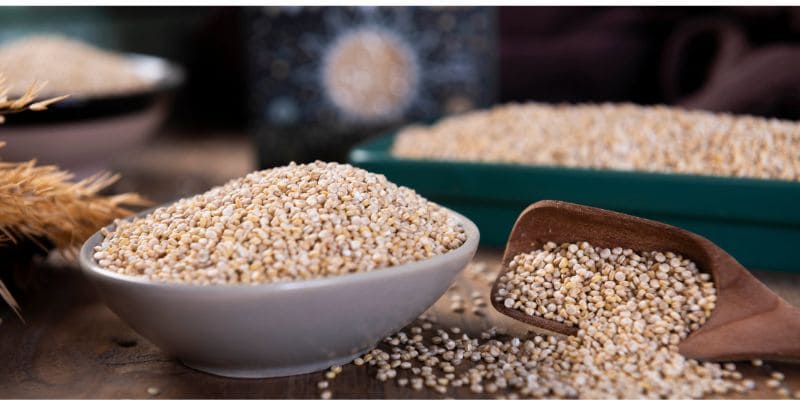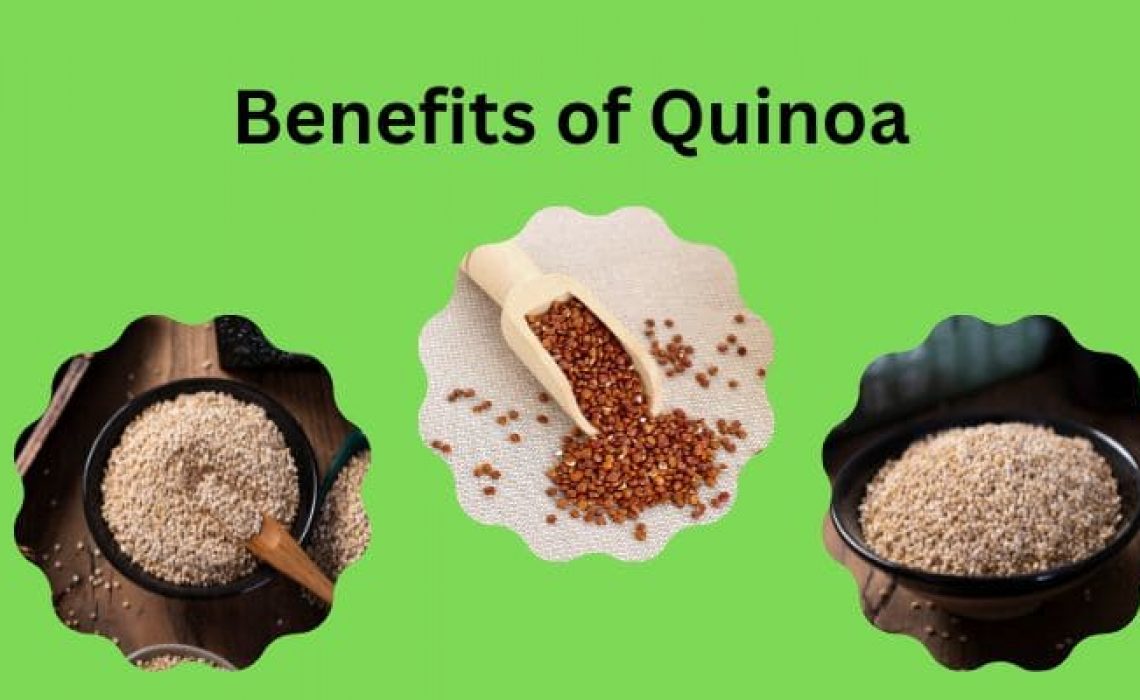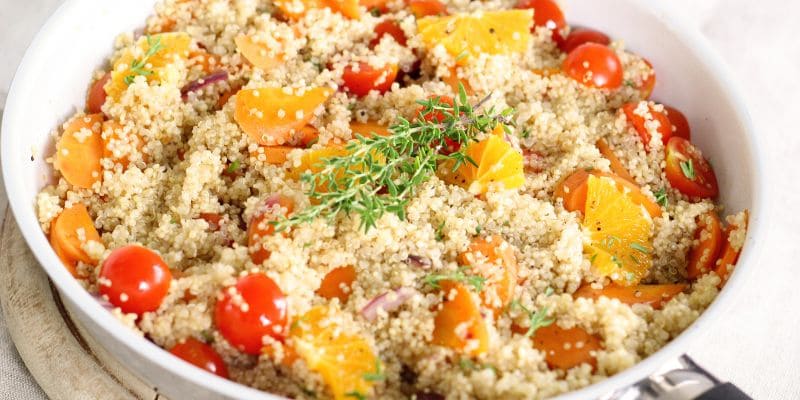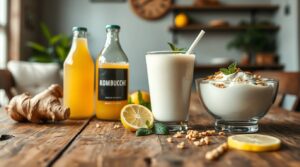Table of Contents
Toggle1. Inquiring minds want to know: What is quinoa?
Quinoa, often known as “qin wa,” is a gluten-free, grain-like food. It is a seed from the same family as beets, radishes, and spinach, however, it is often used in place of whole grains in recipes. It’s the best plant-based source of all nine necessary amino acids and packs a protein punch. The Incas and their descendants ate a diet that included a lot of quinoa, which has been grown in South America (Peru, Chile, Ecuador and Bolivia) for thousands of years. In recent years, nutritionists have praised it as a healthy swap for other grains like bulgur, couscous, and rice.
2. Varieties of Quinoa
- White, Black, and Red
- flour, flax, crisps
- Tri colour
White Quinoa
It has the best texture, being super light and puffy. It also tastes the sweetest. Instead of rice, it can be used as a base for fruit salads and in sweet dishes.
Red Quinoa
It is super crunchy in texture and has a nutritious flavour.
It is used in salads, grain bowls, and as a replacement for rice. However, it is not good in sweet dishes.
Black Quinoa
It’s rare , but it’s like red quinoa. It’s both fun and useful. It is low in fat but high in omega-3 fatty acids and carotenoids. White quinoa also contains almost twice the vitamin. It is also the most common antioxidant of the other two types.
It is also more earthly and sweeter than white quinoa.
Tricolour/Rainbow
It is basically not a type of quinoa but a mixture of white, red, and black quinoa. Being the blend of the three, it has nutty flour and is fluffy in texture.
Varieties
Here, we are discussing three basic types of quinoa: white, red, and black quinoa.
The tricolour/rainbow quinoa is not a type but rather a blend of the three quinoas.
Quinoa flour, flax, and crisp are also manipulated forms of white quinoa, not types of quinoa.
Flour
A fine powder is obtained by grinding whole white quinoa. It is considered the most nutritious flour available. Rich in iron, potassium, magnesium and phosphorus.
Flakes
It is just the pressed form of quinoa. Its seeds are rolled flat to make flakes. It contains all the properties that quinoa has: It is gluten-free and rich in plant-based protein and good fibre.
Crips or Puffs
It is cooked. It has baked until it dries out and turns crispy. The nutritional properties are the same as those of quinoa. It is used as a topping for yoghurt, salads, and smoothie bowls. It is also added to the granules.

3. Nutrition Facts
- Uncooked: It is 13% water, 64% carbs, 14% protein, and 6% fat. According to nutritional analyses, 100 g (3.0 oz) of raw quinoa seeds include a significant amount of B vitamins (20% DV), 46.0% folic acid, and the minerals magnesium, phosphorus, and manganese.
- Cooked: When it is processed from its whole grain form, it has 72% water content, 21% carbs, 4% protein, and 2% fat content. Cooked quinoa provides 503 kJ (120 kcal) of dietary energy and is a moderate source of manganese and phosphorous (30% and 22% of the Daily Value, 30% and 22% (10-19%)) RDA Dietary fibre, folic acid, and dietary minerals such as iron, zinc, and magnesium. One hundred grammes (three ounces) of quinoa provides three times the RDA for folic acid.
4. Is quinoa better than rice?
Rice, the tiny seed of a grassy plant, is a staple food in many countries around the world. Ancient grains feed thousands of people every day. Each grain has its own uses and health benefits. Brown rice and white rice are the two most common types. In general, brown rice has more nutrients than white rice.
Meanwhile, it is not actually a grain (although it is grown and prepared as one, as well as considered a grain from a culinary perspective). Like rice, this edible seed of a plant in the Amaranth family is an ancient staple food.
5. Is quinoa for weight loss?
It is made of insoluble fibre, it makes you feel fuller for longer and helps you lose weight. Rich in fibre and protein, it speeds up the metabolism and reduces cravings by cutting the number of calories you eat. Switching from rice or oats to quinoa is a small change that will help you lose weight by giving you more protein and fibre. Perfect for vegetarians who want to lose weight but struggle to find healthy options. It also has a low glycemic index (GI), which makes it safe for diabetics and helps control blood sugar. It is a good choice for people who want to lose weight because it keeps you from getting constipated and gives your dishes a nice texture.
6. Is quinoa a superfood?
Being rich in nutrients, it is considered a superfood. It is rich in vitamins and minerals and contains more protein, fibre and healthy fats than any other grain. It is rich in manganese, magnesium, phosphorus, folic acid, copper and vitamin B6.
It contains complete proteins, ie nine essential amino acids that the human body cannot make on its own. It is also low in calories.

7. What are the benefits of quinoa?
- Gluten-free: It is a great addition to your diet because it is gluten-free and rich in antioxidants. For individuals following a gluten-free diet, It is another viable grain substitute. Similar to maize and potatoes, it is gluten-free and can be substituted for wheat.
- High in fibre and protein: It is a great plant-based source of protein because it is full of protein and fibre. The protein in quinoa has different amino acids that the body needs. This amino acid helps build muscle and makes the immune system stronger. It is also full of fibre, which helps keep you from getting constipated and keeps your blood sugar and cholesterol levels low.
- May improve gut health: It has anti-inflammatory characteristics that are beneficial to the stomach by protecting the digestive system.
- Nutrition and Minerals: It is high in nutrients, including iron, magnesium, zinc, and potassium. Magnesium can help lower the chance of developing type 2 diabetes and manage blood sugar levels. Iron prevents seizures by restoring normal blood cells and brain activity.
8. Does quinoa have any negative effects?
We had heard that this grain was good for you, and it turns out that this is accurate, particularly if you watch the number of servings you consume. According to Strong, there is no reason to worry about eating at any moment. The natural coating that is found on the outside of the bean is called saponins, and it has the potential to irritate the stomach. This is the only thing that might possibly go wrong, according to him.
However, this can be easily avoided by waiting a little while before eating. To lessen the possibility of inflammation, Strong recommends thoroughly rinsing quinoa before using it.
9. Can we eat quinoa every day?
It is a versatile grain. It can be consumed at any meal of the day. However, if you want to get the health benefits of something like this food, it’s best to eat it for breakfast rather than before bedtime. Relaxed muscles contribute to a more restful night’s sleep, and the high magnesium and protein content of this food makes it possible.
A daily serving of quinoa is one to two cups cooked. If you have stomach issues like bloating, gas, or nausea after eating quinoa, you should probably avoid it. Occasionally, people develop an allergy.
10. Is it safe to eat uncooked quinoa
It is safe to eat uncooked in raw or dried form but it should be first soaked and sprouted. However, some experts say quinoa is safe to cook and should not be eaten raw. They are very nutritious when cooked. But cooking is a safe and versatile way to add it to your diet. The ancient Incas called it the mother of all grains, they considered quinoa a sacred food and a grain similar to couscous. It takes just 15 minutes to cook and provides a boost of protein, vitamins and minerals for every meal. According to reports by, Whole Grains Council, it’s like Wheat.











3 thoughts on “10 Things You Should Know About Quinoa|Benefits of Quinoa”
Pingback: Healthy Eating: The Key to a Vibrant Life
Pingback: Vegan Meal Prep: Tips for a Busy Week - 2023
Pingback: The Vegan Pantry: Essentials for Plant-Based Cooking